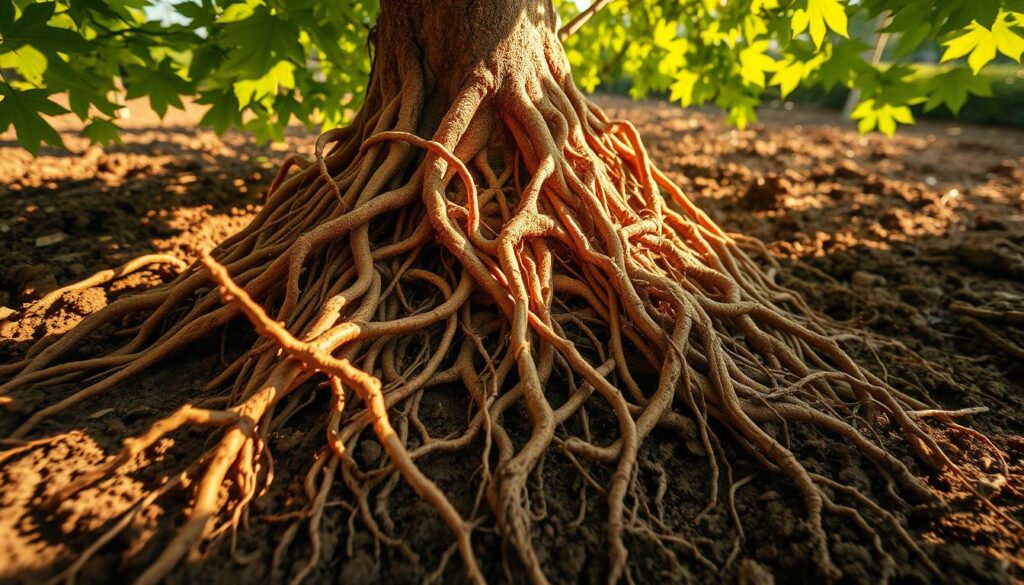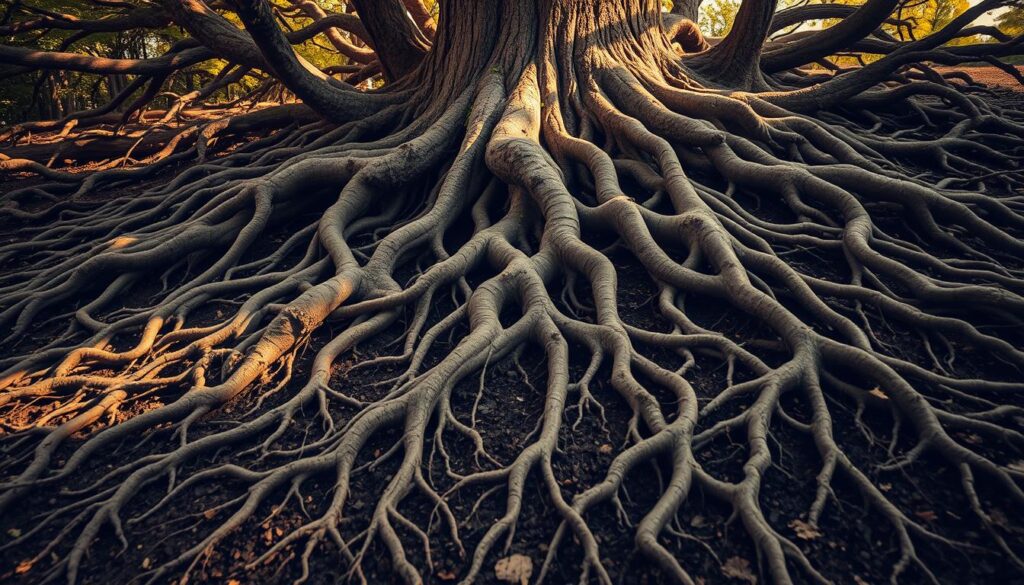I still remember the first sapling I set into our yard — nervous hands, hopeful heart, and a quiet wish for shade years from now. Good technique at the start makes that wish real. With the right approach, a young maple can become a long-lived landmark, deliver brilliant fall colors, and give dependable shade through the seasons.
Choosing the right species matters: hard types like sugar offer longevity, while softer ones such as red or silver establish faster but can be more fragile in storms. Japanese varieties add elegance but often prefer afternoon shade in hot climates.
Planting in spring or fall gives roots the best chance to settle. Container stock can go in summer only if you water consistently and watch for stress. Aim for well-drained, slightly acidic soil rich in organic matter to help root growth and reduce transplant shock.
Key Takeaways
- Proper early steps set the stage for years of healthy growth.
- Match species—hard, soft, or Japanese—to your site’s needs.
- Spring or fall is best; summer works for containers with steady watering.
- Most types like full sunlight; Japanese selections often need afternoon shade.
- Well-drained, slightly acidic soil rich in organic matter aids root establishment.
Before You Dig: Goals, Timing, and What Makes Maples Thrive
Decide what success looks like before you put a shovel to work. Pick a species that matches your yard’s drainage, sun exposure, and available space. This first step sets expectations for decades of growth.
Timing matters: aim for spring or fall when soil is warm and air is cool. Container stock can go in during summer if you give steady water. Bare-root specimens do best in early spring while dormant.
Focus on soil that is slightly acidic and loamy. Good structure holds moderate moisture without becoming waterlogged. That balance helps roots establish fast and reduces shock.
- Match varieties to site—soft types tolerate wetter spots; harder sorts prefer well-drained yards.
- Aim for consistently moist, not soggy, then shift to deep, infrequent watering.
- Gather mulch, a water source, and optional stakes before you plant to avoid rushed work.
“Spring and fall give roots the best chance to settle.”
| Condition | Soft varieties | Hard varieties |
|---|---|---|
| Drainage | Tolerant of wetter sites | Prefer well-drained soil |
| Sun | Full sun to light shade | Full sun best; afternoon shade in hot climates |
| Best time to plant | Spring, fall, or summer for containers | Spring or fall |
Choosing the Right Site and Season for Maple Tree Planting
Choose a location that balances sun exposure with enough room for mature limbs and roots.
Sunlight and shade
Most maples prefer full sun for strong growth and bright fall colors. Reserve afternoon shade for japanese maple varieties to prevent leaf scorch and keep foliage vivid.
Soil essentials
Target soil that is slightly acidic, loamy, and well-drained. Improve heavy soils with compost and avoid areas that stay soggy after rain.
Best seasons and container care
Plant in spring or fall for the best root establishment. If you install a container specimen in summer, water more often to offset heat and higher transpiration.
Match varieties to your yard
Consider size and hardiness: sugar types favor upland, well-drained yards while red and silver tolerate wetter sites but have shallower roots and can break in storms.
| Variety | Typical size | Drainage | Best season | Notes |
|---|---|---|---|---|
| Bloodgood japanese maple | 15–20 ft | Well-drained | Spring/Fall | Needs afternoon shade in hot climates |
| October Glory (red) | 40–50 ft | Tolerates wetter sites | Spring/Fall | Fast cover; watch shallow roots |
| Sugar variety | Large shade size | Prefers well-drained uplands | Spring/Fall | Long-lived, slower to establish |
“Pick a site with room to grow and soil that drains—small choices now avoid big problems later.”
Step-by-Step: How to Plant a Maple Tree the Right Way
Start by clearing the sod and weeds so new roots face no barriers to spread. Prep the site by loosening compacted soil around the spot so drainage is not blocked. Remove turf in a wide circle and amend only if the soil is heavy clay.
Dig the hole: make the hole the same depth as the root ball and two to three times wider. Shape it like a shallow bowl to guide roots outward. Use a tape measure to confirm the hole depth equals the ball height in inches.
Root ball readiness
For container stock, inspect the ball and tease or score any circling roots to prevent girdling. If the ball is burlapped and boxed (B&B), set it in the hole, cut away ropes, and remove synthetic burlap from the sides. Natural burlap under the ball may stay.
Set, backfill, and water
Place the tree so the soil line on the trunk sits level with surrounding grade. Backfill hole with native soil, tamp halfway, then water to settle and remove air pockets. Finish backfilling, gently firm the soil, and water again for a deep soak.
Mulch and finish
Mulch around—not against—the trunk. Create a 2–4 inches deep saucer that extends about 2 feet from the trunk and keeps mulch off the bark. After you dig hole and backfill hole correctly, continue care with steady moisture and protect the trunk from mowers.

“Set the top of the root ball at grade to avoid deep planting and future stress.”
Spacing, Placement, and Room to Grow
Think beyond the trunk: allow space now so branches and roots won’t clash with structures later.

Above- and below-ground considerations
Plan for both canopy and root expansion. The visible crown needs room, and the hidden roots can extend well past the drip line.
Some species develop shallow, aggressive roots that can affect sidewalks and pipes. Place specimens away from foundations, driveways, and septic areas to avoid costly repairs.
Recommended distances and mature size
| Category | Spacing | Mature size |
|---|---|---|
| Large-growing | ≈25 ft apart | 40–50 ft tall, 25–35 ft wide |
| Compact / japanese maples | ≈10 ft apart | 15–20 ft tall and wide |
| Watchful species | Keep farther from hardscapes | Silver varieties: wide, shallow roots |
- Allow clearances from roofs and overhead lines to reduce future pruning.
- Keep a buffer around utilities—roots seek moisture and can exploit weak points.
- Place understory plantings outside the primary root zone to reduce competition and support growth.
“Give each specimen the room its mature size demands; small choices now prevent big maintenance later.”
Aftercare That Drives Growth: Watering, Mulch, Fertilizer, and Pruning
Consistent, simple routines for water and mulch speed establishment and cut future maintenance.
Watering: Water newly set specimens regularly during the first year to keep the root ball moist but not saturated. For japanese maples, water twice weekly during the first months, then deep soak 1–2 times weekly in hot, dry spells.
Favor deep, infrequent soaks over light sprinkles. Check soil a few inches below the surface; it should feel cool and damp. Adjust times per rainfall and heat—containers may need water multiple times per day in a heat wave.
Mulch and moisture management
Keep mulch 2–4 inches deep in a wide ring, refreshed each year. Keep mulch away from the trunk to prevent rot and pests. A good mulch layer moderates soil temperature, reduces weeds, and holds moisture around active roots.
Fertilizer guidance
Avoid feeding in the first two years. Prioritize soil health with compost and organic matter. If growth or color suggests a need later, select a light, low-nitrogen feed.
Pruning, staking, containers, and winter notes
Prune during dormancy to limit sap bleed and disease risk. Remove dead, crossing, or weak-angled branches and correct structure early. Avoid heavy cuts during late winter when sap flows most.
Staking is rarely required. If you must, use soft straps in a figure-eight and remove supports after the specimen stands unaided. For container care, pick pots with drainage, repot 1–2 sizes up as roots fill, and water until excess exits drain holes.
“Attentive care in the first years accelerates establishment and sets the specimen up for sustainable long-term growth.”
| Care area | Recommendation | Frequency |
|---|---|---|
| Water | Deep soak; keep root ball moist, not waterlogged | First year: regular; after: during drought (1–2 times/week in ground) |
| Mulch | 2–4 inches, keep off trunk | Refresh annually |
| Fertilizer | Skip first 2 years; light low-N feed only if needed | As indicated by slow growth or poor color |
| Pruning | Dormant cuts; remove dead or crossing wood | Late winter (avoid sap-run periods) |
For more on keeping young shade specimens healthy in early years, see young shade trees.
Pro Tips and Common Mistakes in Maple Tree Planting
A few simple checks at planting time prevent big problems later.
Avoid deep planting, poor drainage, and girdling roots
Set the soil line even with the surrounding grade. Align the top of the root ball so the trunk sits at the finished surface. This prevents deep planting and suffocation of the root zone.
Always inspect for circling root and loosen or cut them before you backfill. Roughen the sides of the hole to stop glazing and help roots spread. If you must, mound in heavy clay to improve drainage.
Site-smart choices: wind, sidewalks, and soft variety breakage
Pick an area that gives room for mature size and avoids hardscapes. Soft varieties can lift sidewalks and drop large branches in storms. Keep them away from pools and play spaces.
For japanese maple selections, avoid wind tunnels and harsh afternoon sun unless the cultivar tolerates it. Prune structurally during dormancy and remove weak right-angle branches early to reduce future failures.
| Common Mistake | Why it matters | Fix |
|---|---|---|
| Deep planting | Causes slow growth and rot at the flare | Set ball at grade; check the line before backfill |
| Compacted hole walls | Blocks root penetration and drainage | Roughen sides with shovel; dig hole wide, not deep |
| Circling roots | Leads to girdling and decline | Tease, score, or cut circling roots before planting |
| Wrong site for soft varieties | Shallow roots can heave pavements and break branches | Choose larger area away from hardscapes; respect mature size |
“Prevent problems at the start: depth, drainage, and root care are the best investment for long-term growth.”
Conclusion
Success comes from matching species to site, digging a wide shallow hole, and following a steady care plan. Backfill hole with native soil, settle with water, and finish with a mulch saucer kept off the trunk to retain moisture without inviting rot.
Favor spring or fall when possible; summer container installs need more frequent checks and extra water. Protect container roots in winter and prune for structure during dormancy to guide healthy growth over the years.
With proper spacing, sunlight awareness, and simple routines—deep water in heat, a quick daily container check, and light dormant pruning—you’ll enjoy shade and bright fall colors from healthy maple trees for decades.

